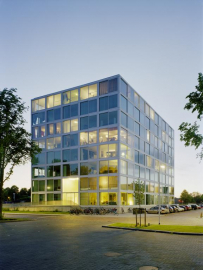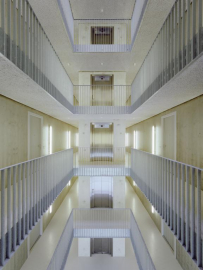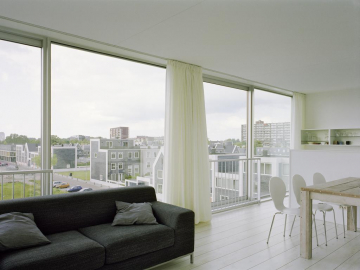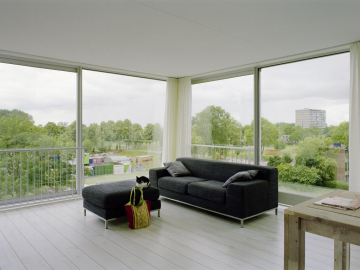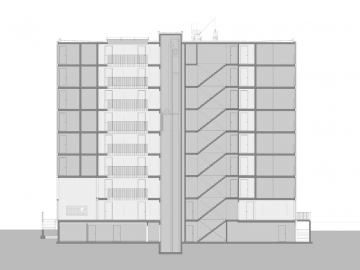Hiphouse Zwolle
New Poverty = New Richness
Social housing Hiphouse Zwolle / The Netherlands 64 units
The Hiphouse project in Zwolle presented Atelier Kempe Thill with a welcome opportunity to fundamentally question the assignment social housing. Largely due to the clients ambition and the active support of urban planners, a prototypical project could be realized without exceeding a typical Dutch standard budget for comparable projects. A radical minimization of architectural means and a visible assertion of the processes and technologies of the building process helped to realize a maximum of living quality.
The deck-access typology is the most common form of multi-story social housing in the Netherlands, because a large number of apartments can be connected to a limited number of stairwells. Despite the social stigma this typology has come to represent, it remains an almost inevitable solution. Due to its extreme cost-efficiency it is still being employed today in large numbers. The very compact building typology realized through the central circulation in Zwolle offers an economic and competitive alternative.
The building block, measuring 23m x 32m and providing 8 units per floor, has a very limited facade surface in relation to its floor area; this favourably affects building costs and enables the high quality detailing of the facade. The housing units are organized around a central core containing a double stair and an elevator. The plan layout allocates the larger apartments to the spatially interesting corners, thus creating apartments with double orientation.
The smaller studio apartments either face east or west, guaranteeing optimum sunlight for all apartments. To compensate for its volumetric compactness, the buildings surface is consistently glazed. Anodized aluminium profiles hold the high quality solar-protection glazing to form the facade. Depending on the viewers position the building appears to be covered by a transparent skin or a reflective surface; furthermore, sliding doors provide generously dimensioned facade openings.
As a whole, a very delicate visual balance is achieved. The functional grid of the windows and the underlying construction form a rigid architectural order, which is counterbalanced by a spontaneous collage of colourful apartment interiors. In a display of the complexities of city life a vital and optimistic image emerges, striking up intensive communication with the neighbourhood. This image is collective as well as individual, for it is - consciously or unconsciously - formed with the active participation of every inhabitant. The building in use therefore essentially becomes the facade.
Upon entering the apartments it becomes evident that even in social housing real luxury should be indispensable. The units are very well lit, with minimal circulation areas and large living spaces with freestanding kitchen blocks. Loft spaces are not an exclusive form of living reserved for a well-to-do elite, but are also realizable in the context of social housing. An emancipation of the lower income classes will last but not least have to be achieved through an increase in the quality of individual housing.


